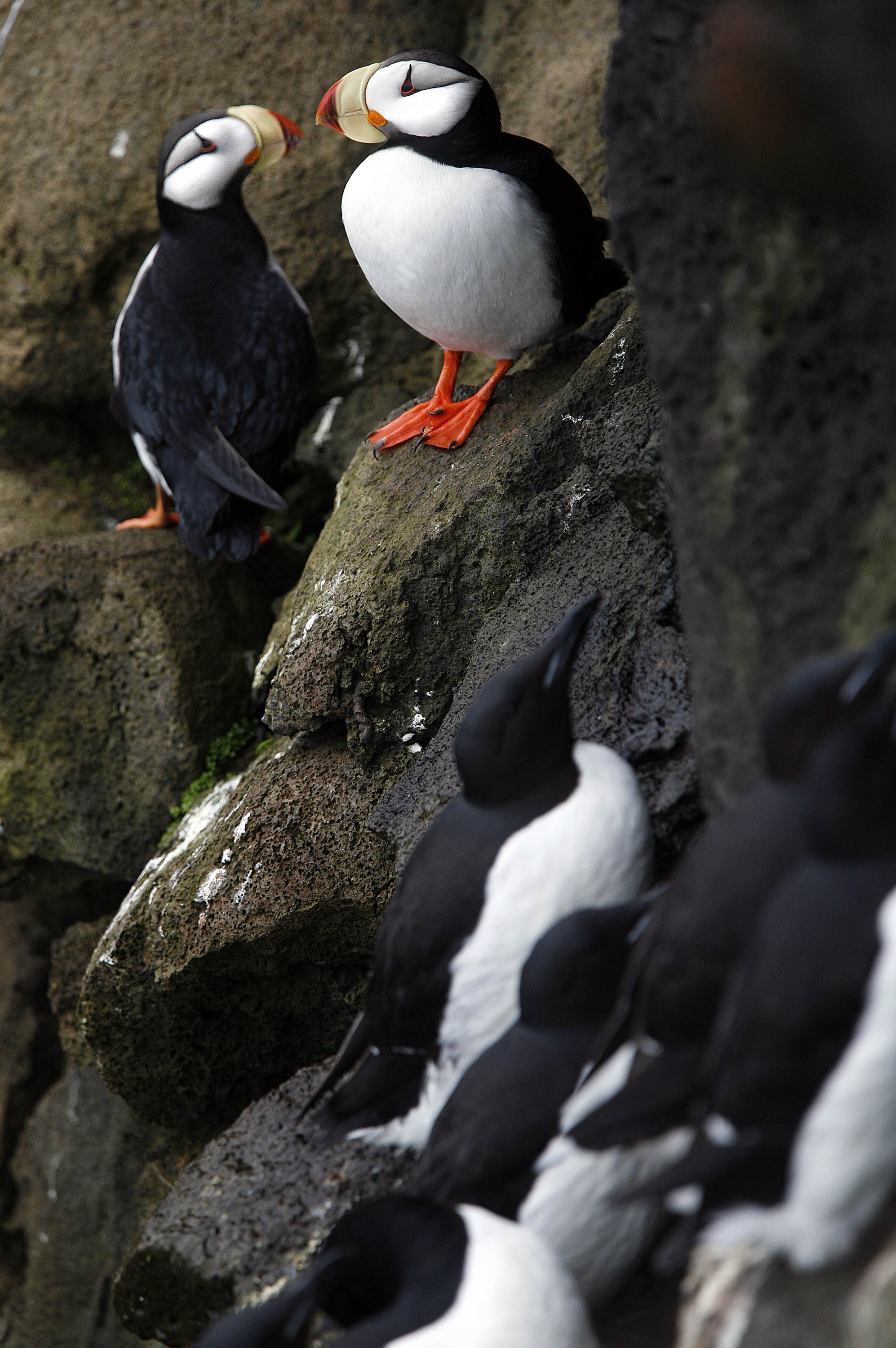ANCHORAGE, Alaska — The number of seabirds, including gulls, puffins and auklets, has dropped significantly in the Gulf of Alaska and northeast Bering Sea, a possible consequence of warmer waters, according to a preliminary federal analysis of nearly 40 years of surveys.
U.S. Geological Survey experts found the seabird population density declined 2 percent annually from 1975 to 2012 in the northeast North Pacific, said John Piatt, research wildlife biologist at the USGS Alaska Science Center.
“Biologically speaking, that’s a pretty major change,” he said.
Piatt and researcher Gary Drew suspect the decline may be tied to less food availability, a consequence of warmer ocean temperatures that occur in cycles over decades.
Seabird populations could bounce back as water cools, Piatt said, but decadal cycles could ultimately be superseded by global warming.
“That’s what a lot of people are concerned about,” he said. “We don’t know. We’re just learning about the Pacific Decadal Oscillations and that they’re important.”
The analysis of seabird surveys began in earnest in 1989.
“We started pulling together some of these data bases after the Exxon Valdez oil spill when it was clear we needed to get a better handle on densities of birds at sea to assess damages,” Piatt said.
The result was the creation of the North Pacific Pelagic Seabird Database. It includes bird counts from 350,000 ship transects, the plotted paths to systematically make measurements.
To make sense of the numbers, researchers looked for blocks of water where at least 10 surveys had been conducted in a given year in all four decades.
“We pulled out places where there was repetition. It gave us 72 blocks of water for which we had data spanning 40 years,” Piatt said.
Exxon Valdez oil killed a lot of birds, Piatt said, but seabird numbers also declined outside the spill area.
“It was much bigger than the oil spill,” Piatt said.
Starting in the late 1970s, atmospheric circulation changed. Water temperatures that had been colder than average for a decade shifted to several degrees warmer than average for more than 30 years.
The changes were tied to effects from Pacific Decadal Oscillations. The term describing climate variability was coined by fisheries scientist Steven Hare, who researched connections between Alaska salmon production cycles and Pacific climate. NASA describes the oscillations as long-term ocean fluctuations that wax and wane every 20 to 30 years.
With warmer water, phytoplankton bloomed earlier. Zooplankton fed on phytoplankton and developed earlier, providing abundant food for early spawning fish such as halibut, pollock and cod and leaving less food for late spawners such as capelin, a type of smelt consumed by seabirds.
“This was a magnitude-9 earthquake in the ecosystem,” Piatt said. “Everything changed afterward, including marine birds.”
Counts at bird colonies were not part of the USGS review. U.S. Fish and Wildlife Service seabird researcher David Irons said trends at colonies are generally in sync with the at-sea data. Seabird numbers fell at some colonies in the mid-1980s and afterward but eventually leveled off or increased.
“Basically the decline leveled off around 2000,” Irons said.
The USGS review goes through 2012. As water temperatures have cooled in recent years, some bird numbers have ticked up, Piatt said. The historical record indicates wildlife such as salmon has booms and busts in population corresponding to natural cycles in the environment.
“The animals are responsive to changes in the environment,” he said.
The more worrisome issue is global warming that could supersede decadal pulses.
“The background increase in global temperature is a happening fact,” he said. “It’s not hypothetical.”

